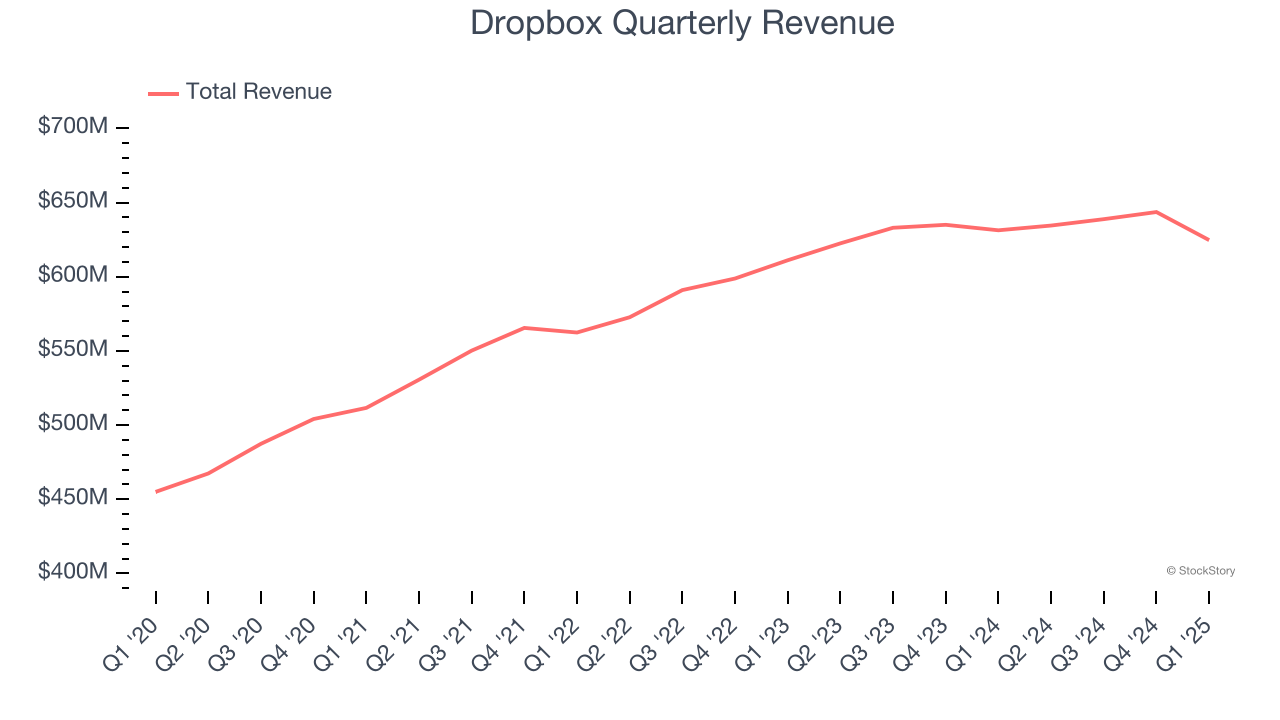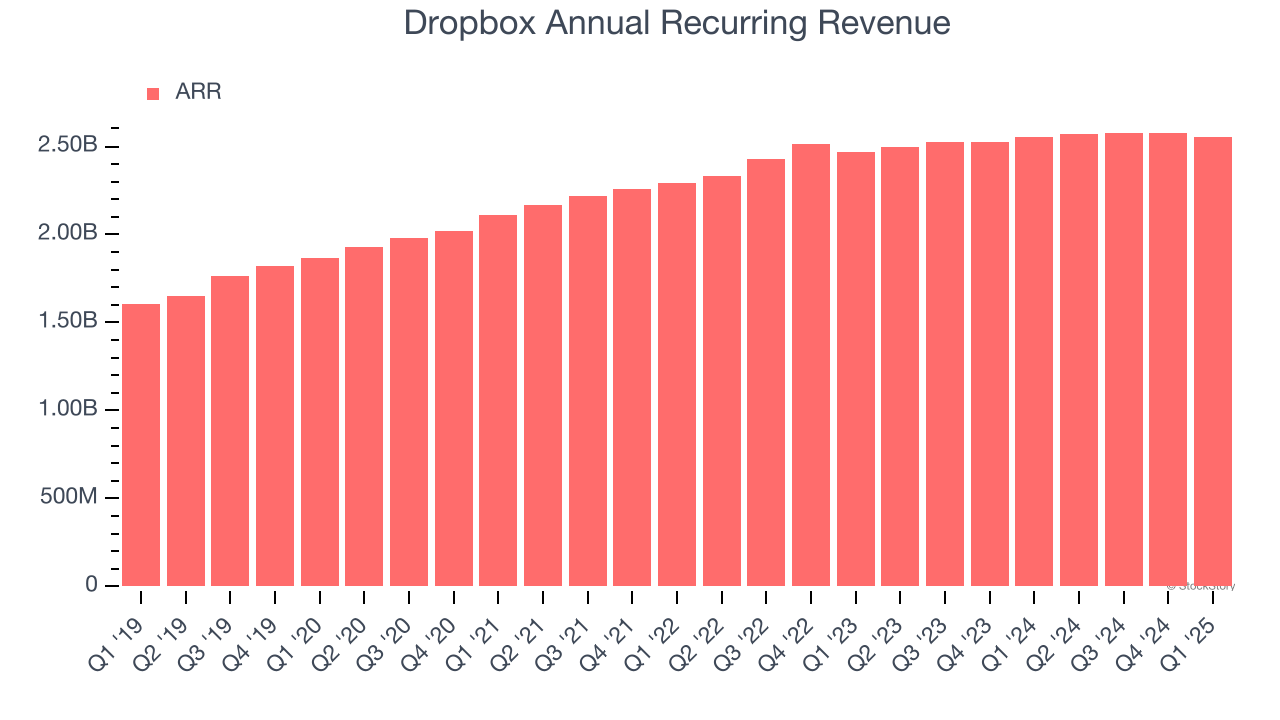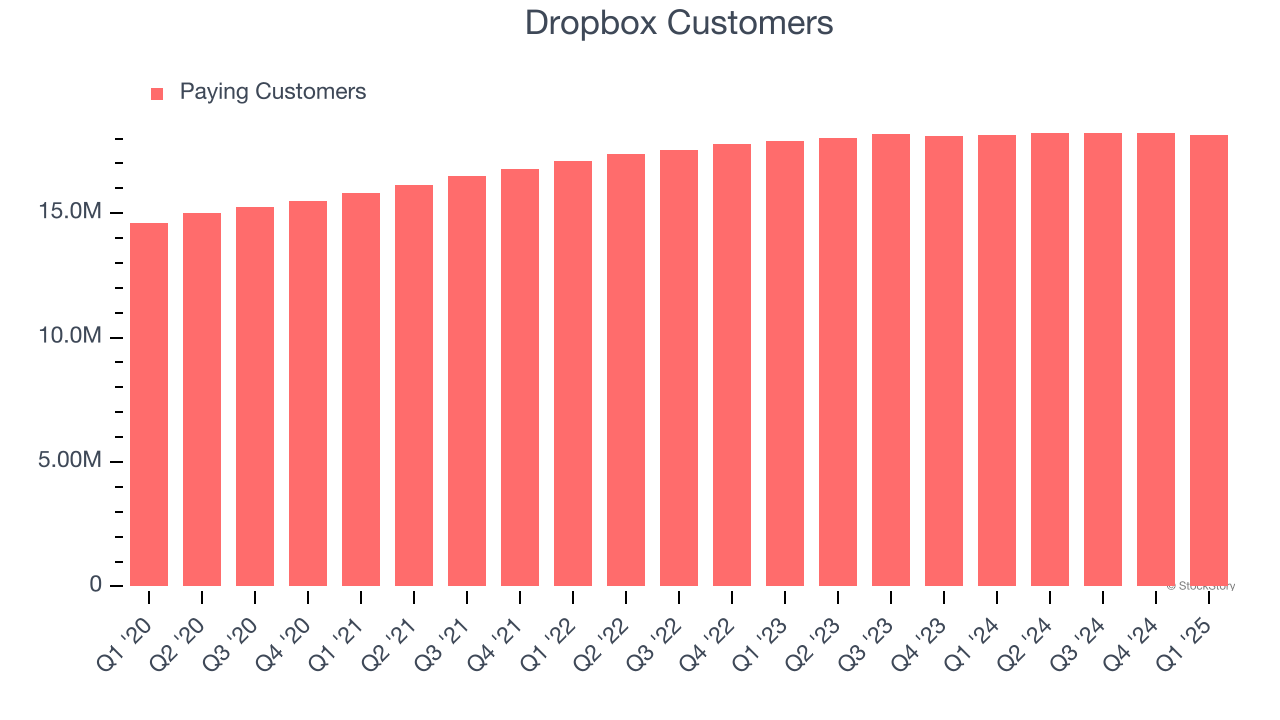
Cloud storage and e-signature company Dropbox (Nasdaq: DBX) announced better-than-expected revenue in Q1 CY2025, but sales fell by 1% year on year to $624.7 million. Its non-GAAP profit of $0.70 per share was 12.6% above analysts’ consensus estimates.
Is now the time to buy Dropbox? Find out by accessing our full research report, it’s free.
Dropbox (DBX) Q1 CY2025 Highlights:
- Revenue: $624.7 million vs analyst estimates of $620.2 million (1% year-on-year decline, 0.7% beat)
- Adjusted EPS: $0.70 vs analyst estimates of $0.62 (12.6% beat)
- Adjusted Operating Income: $260.5 million vs analyst estimates of $237.2 million (41.7% margin, 9.8% beat)
- Guidance will be provided on the upcoming earnings call and could move shares
- Operating Margin: 29.4%, up from 22.7% in the same quarter last year
- Free Cash Flow Margin: 24.6%, down from 32.7% in the previous quarter
- Customers: 18.16 million, down from 18.22 million in the previous quarter
- Annual Recurring Revenue: $2.55 billion at quarter end, in line with the same quarter last year
- Billings: $636.4 million at quarter end, down 1.8% year on year
- Market Capitalization: $8.47 billion
Company Overview
Founded by the long-serving CEO Drew Houston and Arash Ferdowsi in 2007, Dropbox (NASDAQ: DBX) provides a file hosting cloud platform that helps organizations collaborate and share documents.
Sales Growth
A company’s long-term performance is an indicator of its overall quality. Any business can put up a good quarter or two, but the best consistently grow over the long haul. Over the last three years, Dropbox grew its sales at a weak 4.8% compounded annual growth rate. This fell short of our benchmark for the software sector and is a poor baseline for our analysis.

This quarter, Dropbox’s revenue fell by 1% year on year to $624.7 million but beat Wall Street’s estimates by 0.7%.
Looking ahead, sell-side analysts expect revenue to decline by 3% over the next 12 months, a deceleration versus the last three years. This projection is underwhelming and indicates its products and services will face some demand challenges.
Today’s young investors won’t have read the timeless lessons in Gorilla Game: Picking Winners In High Technology because it was written more than 20 years ago when Microsoft and Apple were first establishing their supremacy. But if we apply the same principles, then enterprise software stocks leveraging their own generative AI capabilities may well be the Gorillas of the future. So, in that spirit, we are excited to present our Special Free Report on a profitable, fast-growing enterprise software stock that is already riding the automation wave and looking to catch the generative AI next.
Annual Recurring Revenue
While reported revenue for a software company can include low-margin items like implementation fees, annual recurring revenue (ARR) is a sum of the next 12 months of contracted revenue purely from software subscriptions, or the high-margin, predictable revenue streams that make SaaS businesses so valuable.
Dropbox’s ARR came in at $2.55 billion in Q1, and over the last four quarters, its growth was underwhelming as it averaged 1.7% year-on-year increases. This performance mirrored its total sales and suggests that increasing competition is causing challenges in securing longer-term commitments. 
Customer Base
Dropbox reported 18.16 million customers at the end of the quarter, a sequential decrease of 60,000. That’s worse than what we’ve observed previously, and we’ve no doubt shareholders would like to see the company accelerate its sales momentum.

Key Takeaways from Dropbox’s Q1 Results
It was good to see Dropbox narrowly top analysts’ annual recurring revenue expectations this quarter. We were also happy its billings narrowly outperformed Wall Street’s estimates. On the other hand, its customer growth slowed. Guidance will be provided on the upcoming earnings call and could move shares. Overall, this was a mixed quarter. The stock traded down 1.3% to $29.30 immediately following the results.
The latest quarter from Dropbox’s wasn’t that good. One earnings report doesn’t define a company’s quality, though, so let’s explore whether the stock is a buy at the current price. When making that decision, it’s important to consider its valuation, business qualities, as well as what has happened in the latest quarter. We cover that in our actionable full research report which you can read here, it’s free.







